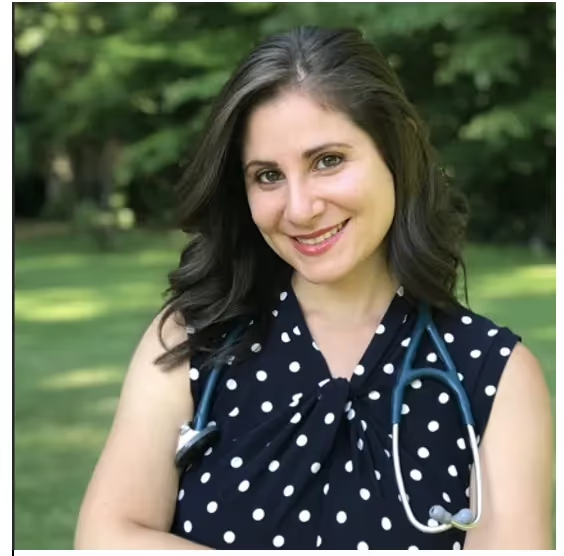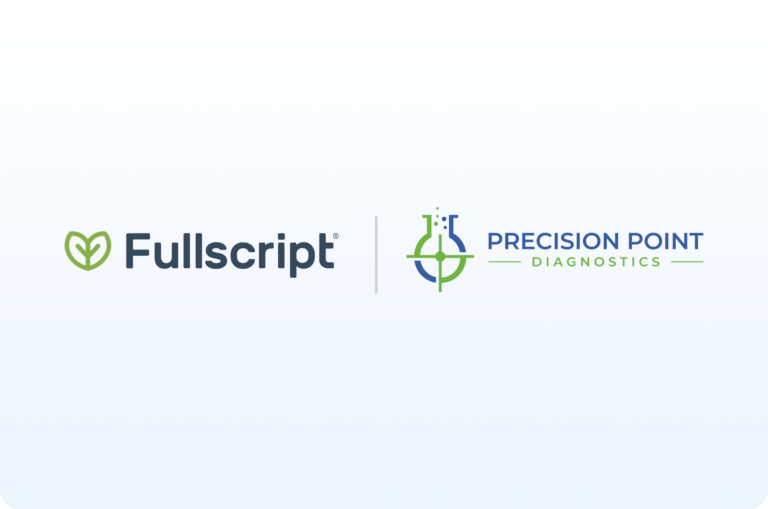Congratulations on reaching a major milestone in your professional journey! You’re now part of a growing community of healthcare professionals committed to making a lasting impact through informed, compassionate care.
This guide offers post-grad wisdom, personal reflections, and actionable steps all shaped by the experiences of alumni who have stood where you are now.
Whole person care is the future.
Fullscript puts it within reach.
healthcare is delivered.
Then and Now: Emotional Reflections
The transition from medical student to practicing professional is rarely seamless. Many new doctors find themselves caught off guard by how different life feels once the academic structure disappears. Alumni often describe this shift as emotionally complex, filled with excitement, but also a sense of disorientation.
One common shift after graduation is the loss of a built-in community. During medical school, peers are readily available for support, shared experiences, and collective problem-solving. In contrast, post-graduation roles often place new professionals in less familiar environments, where teams change frequently and social ties must be actively built rather than naturally occurring.
This transition also prompts a redefinition of identity. The focus for years has been on achieving a specific goal, earning the degree, and becoming a doctor. Once that milestone is reached, the absence of that singular pursuit can leave new doctors questioning what their purpose looks like in day-to-day practice.
Another challenge is the lack of structure. Academic life provides a clear, scheduled path. Post-graduation roles typically involve more autonomy but fewer guardrails, which can be disorienting. Adapting to a more fluid routine often requires new strategies to maintain balance and direction.
To stay grounded, make time for regular self-reflection. Whether through journaling, mentorship, or revisiting what drew you to medicine in the first place, these habits can help you reconnect with your purpose and feel more anchored during this transition.
Settling Into Post-Grad Life
The early post-graduation period also comes with logistical adjustments that can impact well-being. Many new doctors face financial challenges as they begin earning a modest resident or entry-level salary after years of student loans and minimal income.
Budgeting for essentials, managing debt, and understanding new expenses like licensing fees or moving costs is a steep but necessary learning curve.
If you’re moving to a new city, securing housing adds another layer of complexity. It may help to start with short-term accommodations so you can explore neighborhoods, get a feel for your commute, and make a more informed long-term choice once your routine stabilizes.
Without the structure of classes and exams, you’ll need to build your own routines to stay grounded. Simple habits like planning your meals, scheduling exercise, and carving out downtime can go a long way in maintaining your physical and mental health. These routines also give you back a sense of control when much of your schedule is driven by clinical demands.
Socially, you may notice some shifts. Keeping in touch with old friends can become more difficult, and building new connections might take more effort than before. Balancing independence with meaningful social interaction is key. Whether through co-residents, local meetups, or non-medical hobbies, finding ways to stay connected will support your adjustment and overall well-being.
The Immediate Transition: From Student to Professional
Graduating from medical school shifts you into a new professional space almost overnight. While you may feel prepared clinically, the administrative and emotional demands of this transition require equal attention.
Navigating certification and licensing
In the months after graduation, exam prep and licensing tasks take center stage. Managing study timelines while juggling job responsibilities can feel overwhelming, especially when paired with the pressure to perform clinically. You may also wrestle with guilt during downtime, wondering if you should be studying or working instead of resting.
To stay on track, map out certification dates and create a realistic study plan that accounts for your work schedule. Use trusted prep resources and lean on peer support when possible. Just as important, carve out time for rest because breaks are essential for retention and long-term performance, not a sign of neglect.
Identity shift and professional confidence
Letting go of the “student” identity takes time. You’ve trained for years, but fully stepping into your role as a provider may not feel natural right away. Give yourself permission to grow into the title.
Professional confidence often lags behind competence. You might find yourself questioning your abilities, especially in unfamiliar or high-stakes settings. These feelings are common and don’t reflect your actual readiness. Identify mentors, seek feedback, and focus on continuous learning. The more consistently you show up, the more your confidence will catch up with your training.
Career Pathways and Decisions
As you gain experience, the range of career possibilities becomes clearer. Whether you’re focused on clinical work or exploring other professional avenues, understanding your options will help you make informed decisions.
Diverse career models
You’re not limited to a single practice setting. Some doctors choose solo or group private practices, while others work in hospitals, integrative care clinics, or community health organizations. Opportunities also exist in research, teaching, healthcare technology, and telehealth.
Think about your ideal work environment, desired level of autonomy, and areas of interest. Each model has different demands and rewards, and the right fit depends on your professional goals and personal values.
Job search guidance
When it comes to searching for your first role, use multiple strategies. Leverage professional networks, alumni groups, and job boards tailored to healthcare professionals. Keep your resume concise and focused on clinical experience, certifications, and leadership or volunteer roles.
Interview preparation should include both clinical scenarios and questions about team dynamics, workflow, and values alignment. As offers come in, evaluate them based not just on salary, but also benefits, schedule expectations, and opportunities for growth. If negotiation feels unfamiliar, seek advice from mentors or peers who’ve been through the process.
Setting Up or Joining a Practice
If you’re considering private practice, either independently or with partners, the administrative setup deserves thoughtful planning. Early decisions can shape the sustainability and success of your work.
Foundations of a thriving practice
Start with the basics: register your business entity, secure malpractice insurance, and understand your state’s licensing and compliance requirements. Location matters too. Consider accessibility, local demand, and lease terms. Budgeting for overhead, staffing, and equipment should be part of your foundational planning.
Digital and clinical tools
Investing in the right systems from the beginning can improve efficiency and patient experience. Electronic medical records (EMRs), scheduling software, secure messaging platforms, and billing tools should integrate smoothly with your workflow.
For patient engagement, consider digital tools that support treatment plans, communication, and education. These platforms can help improve adherence and streamline follow-up, especially if you’re managing a busy or remote practice.
Professional growth and self-care
As you move deeper into your career, growth and sustainability will depend on how well you prioritize both your learning and your well-being. Investing in your development while protecting your energy will support your long-term success in medicine.
Continuing education and specialization
Keeping your license active requires regular continuing education, but this is also a chance to deepen your expertise. Look for advanced certifications or training in areas that align with your evolving interests or the needs of your patient population.
Pay attention to emerging trends and niche specialties that could expand your scope or open new doors. Whether it’s integrative modalities, technology-driven care, or underserved populations, targeted learning can help you stay ahead while refining your professional identity.
Resilience, boundaries, and well-being
Burnout remains a widespread concern, especially in the early years of practice. To protect your energy, set clear boundaries around your time and workload. This doesn’t mean achieving perfect balance, but rather calibrating work and life in a way that feels sustainable for you.
Don’t wait until you’re overwhelmed to ask for help. Whether it’s through therapy, peer support, or institutional resources, reaching out early shows strength and foresight. Building resilience is not just about pushing through challenges—it’s about creating conditions that allow you to thrive.
Staying Connected and Building Community
Graduation doesn’t have to mean going it alone. Staying connected to your professional community can enhance your career, support your well-being, and remind you that you’re part of something larger.
Alumni and professional networks
Join events like happy hours, reunions, and networking panels to maintain relationships and build new ones. Stay engaged through platforms like Zoom meetups, Slack groups, or alumni-only LinkedIn circles.
Giving back and leading forward
As your experience grows, your insight becomes more valuable to others. Consider ways to support future providers:
- Mentorship moments: Share your journey in mini interviews as a mentor or mentee.
- Volunteer: Join panels, review applications, or contribute to alumni blogs.
- Nominate alumni: Know someone doing great work? Nominate them for a feature or spotlight.
Helpful Resources & Tools for Year One
Starting your first year in practice comes with a steep learning curve, but having the right tools can make the transition smoother. Here are key resources to consider across clinical operations, professional development, and personal support:
Practice management and clinical tools
- Electronic medical records (EMRs): Choose a user-friendly, secure EMR that integrates scheduling, charting, billing, and patient communication.
- Virtual care platforms: Look for HIPAA-compliant video tools with built-in messaging and documentation functions.
- Patient engagement tools: Systems that support digital treatment plans, supplement recommendations, and follow-up tracking help improve care and adherence.
- Scheduling and billing software: Tools that automate reminders, manage cancellations, and process payments can reduce administrative burden.
Professional development resources
- Continuing education platforms: Use accredited sources to fulfill license requirements and explore new areas of interest.
- Clinical guidelines and databases: Subscribe to reputable medical databases for up-to-date protocols and evidence-based guidance.
- Mentorship and networking: Join alumni groups, specialty societies, or professional associations to stay connected and learn from more experienced peers.
Personal well-being and organization
- Time management apps: Tools like task managers or calendar apps can help structure your time and avoid overbooking.
- Mental health and resilience programs: Consider mindfulness apps, coaching services, or support groups designed for healthcare professionals.
- Financial planning tools: Budgeting software or access to a financial advisor can support smart decisions early in your career.
Starting with a well-equipped toolkit will not only streamline your workflow, but also support your growth and sustainability as a new provider.
Frequently Asked Questions (FAQs)
These frequently asked questions highlight common areas of focus and practical considerations to help you navigate with more confidence.
What platforms are best for running a virtual practice?
Look for platforms that integrate secure video visits, EMR access, e-prescribing, and patient communication tools. Consider ease of use, compliance with privacy regulations, and whether it supports the type of care you offer.
When should I start a clinic vs. join one?
Joining an established clinic can give you mentorship, operational support, and a built-in patient base—ideal if you want stability early on. Starting your own clinic offers autonomy but requires time, capital, and comfort with risk. Make this decision based on your experience level, financial readiness, and long-term goals.
What CE tracks are most popular among new grads?
Common areas include integrative care, mental health, functional nutrition, pediatrics, and chronic disease management. Choose courses that align with your clinical interests and the populations you plan to serve.
How can I grow my patient list sustainably?
Focus on building referral networks, maintaining consistent communication with patients, and creating a strong online presence. Patient trust and word-of-mouth often grow from clear, compassionate care and good follow-up systems.
What mistakes should I avoid in year one?
Common missteps include overextending your schedule, underpricing services, neglecting boundaries, and skipping support systems. Prioritize sustainability over perfection and build habits that promote both clinical excellence and personal health.
Key Takeaways
- Transitioning from medical school to practice is emotionally and logistically challenging, often marked by a loss of structure, shifting identity, and the need for new routines.
- Early financial planning, building a support system, and maintaining health habits are crucial to thriving during your first year post-graduation.
- Professional confidence takes time to develop, so lean on mentorship, accept feedback, and trust that growth happens with experience.
- There are diverse, rewarding career paths in medicine—exploring different models can help align your work with your personal values and goals.
- Staying connected to peers, alumni, and professional networks provides essential support, inspiration, and opportunities for continued growth.
Disclaimer:
This article is intended for informational and educational purposes only. The insights and experiences shared reflect general observations and do not constitute medical, legal, or financial advice. New graduates should consult appropriate professional advisors or institutional guidelines when making personal or professional decisions.
Whole person care is the future.
Fullscript puts it within reach.
healthcare is delivered.
References
- Arlinghaus, K. R., & Johnston, C. A. (2018). The Importance of Creating Habits and Routine. American Journal of Lifestyle Medicine, 13(2), 142–144.
- Cooper, A. Z., Fratta, T. L., Clardy, P., & Terhune, K. (2019). How to Approach the First Physician Job Search. Journal of Graduate Medical Education, 11(2), 231–232. https://doi.org/10.4300/jgme-d-19-00102.1
- Cordovani, L., Wong, A., & Monteiro, S. (2019). Maintenance of certification: how do we teach practicing physicians? Canadian Medical Education Journal. https://doi.org/10.36834/cmej.53065
- Craft, J. A., & Craft, T. P. (2025). Rising Medical Education Debt a Mounting Concern: Graduates also face less favorable repayment terms, shortage of training positions. Missouri Medicine, 109(4), 266. https://pmc.ncbi.nlm.nih.gov/articles/PMC6179784/
- Jayas, A., Andriole, D. A., Grbic, D., Hu, X., Dill, M., & Howley, L. D. (2023). Physicians’ continuing medical education activities and satisfaction with their ability to stay current in medical information and practice: A cross‐sectional study. 6(2). https://doi.org/10.1002/hsr2.1110
- Jordan, M. (2023). The power of connection: Self-care strategies of social wellbeing. Journal of Interprofessional Education & Practice, 31(1), 100586. https://doi.org/10.1016/j.xjep.2022.100586
- Koshy, K. (2017). Reflective Practice in Health Care and How to Reflect Effectively. International Journal of Surgery Oncology, 2(6), 1–3. https://doi.org/10.1097/IJ9.0000000000000020
- Ng, I. K. (2024). Making the transition from medical student to junior doctor. The Journal of the Royal College of Physicians of Edinburgh. https://doi.org/10.1177/14782715241299837
- Østergaard, D., & Nøhr, S. B. (2023). The transition from medical student to becoming a doctor. Ugeskrift for Laeger, 185(15), V08220497. https://pubmed.ncbi.nlm.nih.gov/37114588/
- Underdahl, L., Ditri, M., & Duthely, L. (2024). Physician Burnout: Evidence-Based Roadmaps to Prioritizing and Supporting Personal Wellbeing. PubMed, Volume 16, 15–27. https://doi.org/10.2147/jhl.s389245
- Zia, S., Abbas, M., Sulaiman, M., & Sheikh, S. M. (2017). Career choices of Medical doctors at Graduate level ‑ A Multicenter Study. Pakistan Journal of Medical Sciences, 33(5). https://doi.org/10.12669/pjms.335.12945




